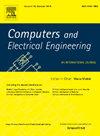Study on the Spacing between Movable Bus Stops and Signalized Intersections under Cooperative Vehicle Infrastructure Environment
IF 4
3区 计算机科学
Q1 COMPUTER SCIENCE, HARDWARE & ARCHITECTURE
引用次数: 0
Abstract
Bus stops and signalized intersections are bottlenecks in urban road traffic, and their combined effect can exacerbate congestion in these areas. This study aims to address this bottleneck by proposing the use of a roadside movable bus stop within a cooperative vehicle infrastructure environment. Therefore, this paper studies the spacing between bus stops upstream and signalized intersections in a cooperative vehicle infrastructure environment. The study first analyzes the interaction between signal intersection and bus stop, then enhances the variable time-interval safety distance strategy through integration with the cooperative vehicle infrastructure environment. It then establishes vehicle operation rules for regular road sections, bus stop sections, and intersection areas and develops a simulation environment. Finally, the traffic flow characteristics under the combined configuration are analyzed, and reasonable recommendations are provided for setting the movable stop spacing upstream of intersections within the cooperative vehicle infrastructure environment. The results show that the connected vehicles can improve the traffic efficiency of the signalized intersection-stop section, and the intersection-stop spacing needs to be flexibly adjusted according to the traffic level, the penetration rate of connected vehicles, and bus dwell time. This paper provides a theoretical basis for urban bus stop planning in the cooperative vehicle infrastructure environment.
协同车辆基础设施环境下可移动公交车站与信号交叉口间距研究
公交车站和信号交叉口是城市道路交通的瓶颈,它们的共同作用会加剧城市道路交通的拥堵。本研究旨在通过提出在合作车辆基础设施环境中使用路边可移动公交车站来解决这一瓶颈。因此,本文研究了协同车辆基础设施环境下公交上游站点与信号交叉口之间的间距问题。该研究首先分析了信号交叉口与公交车站的交互作用,然后通过与协同车辆基础设施环境的融合,增强了变时间隔安全距离策略。然后建立常规路段、公交车站路段和十字路口区域的车辆运行规则,并开发仿真环境。最后,分析了组合配置下的交通流特征,并对协同车辆基础设施环境下交叉口上游可动停车间距的设置提出了合理建议。结果表明:车联网可提高信号交叉口停车路段的通行效率,交叉口停车间距需要根据交通水平、车联网普及率、公交车停留时间等因素进行灵活调整。本文为协同车辆基础设施环境下的城市公交车站规划提供了理论依据。
本文章由计算机程序翻译,如有差异,请以英文原文为准。
求助全文
约1分钟内获得全文
求助全文
来源期刊

Computers & Electrical Engineering
工程技术-工程:电子与电气
CiteScore
9.20
自引率
7.00%
发文量
661
审稿时长
47 days
期刊介绍:
The impact of computers has nowhere been more revolutionary than in electrical engineering. The design, analysis, and operation of electrical and electronic systems are now dominated by computers, a transformation that has been motivated by the natural ease of interface between computers and electrical systems, and the promise of spectacular improvements in speed and efficiency.
Published since 1973, Computers & Electrical Engineering provides rapid publication of topical research into the integration of computer technology and computational techniques with electrical and electronic systems. The journal publishes papers featuring novel implementations of computers and computational techniques in areas like signal and image processing, high-performance computing, parallel processing, and communications. Special attention will be paid to papers describing innovative architectures, algorithms, and software tools.
 求助内容:
求助内容: 应助结果提醒方式:
应助结果提醒方式:


